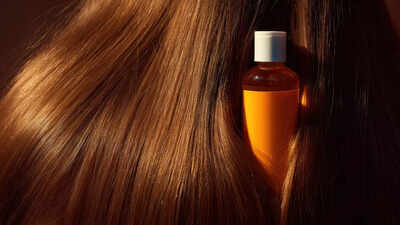ARTICLE AD BOX

Hair oiling is one of the oldest and most effective beauty practices, especially in Indian households. It nourishes the scalp, strengthens hair, reduces breakage, and promotes shine.
However, many people unknowingly make mistakes that limit the benefits or even damage their hair. From over-massaging to using excessive amounts, these errors can leave hair greasy, brittle, or prone to scalp issues. In this article, we explore five common hair oiling mistakes, explain why they happen, and provide practical solutions to ensure your hair oiling routine works effectively. By following these tips, you can enjoy healthier, stronger, and more manageable hair.
5 Common hair oiling mistakes that you make

Leaving oil on overnight
Leaving oil on your hair overnight is a common practice, but it is not always necessary. While some believe it maximises absorption, prolonged exposure can attract dust and environmental pollutants, weakening hair strands and clogging pores.How to fix it: Limit the oiling period to 2–4 hours before washing. This allows the hair to absorb nutrients without overburdening the scalp. Using a soft towel or silk scarf to cover hair can also reduce dust accumulation.
Applying too much oil
Using excessive oil might feel indulgent, but it can make hair greasy, difficult to wash, and heavy. Over-oiling can also dilute the effectiveness of nutrients, preventing proper absorption by the scalp and hair follicles.How to fix it: Use a small amount, roughly a teaspoon for short hair and up to two tablespoons for longer hair. Focus on massaging the oil evenly from scalp to tips rather than saturating each strand.
Massaging too aggressively
Massaging stimulates blood circulation, but vigorous rubbing can damage hair roots and cause breakage. Aggressive massaging may also irritate the scalp and worsen dandruff.How to fix it: Opt for gentle circular motions while applying oil. Spend 5–10 minutes massaging the scalp, allowing the oil to penetrate naturally. This encourages growth and strengthens follicles without causing harm.
Using the wrong oil for your hair type

Not all oils suit every hair type or scalp condition. Heavy oils like castor or coconut may weigh down fine hair, while lighter oils may not provide enough nourishment for thick or dry hair.
Using the wrong oil can also exacerbate scalp issues, such as dandruff or excessive oiliness.How to fix it: Match your oil to your hair type. Coconut oil suits dry hair and thick strands, almond oil works well for frizz control, and jojoba or argan oil is ideal for fine or oily hair. Experiment with combinations to find the right balance.
Ignoring scalp issues
Applying oil on a scalp with active dandruff, irritation, or infections can worsen the problem.
Many assume oiling always improves hair health, but neglecting scalp conditions can make hair fall, itchiness, or flakiness worse.How to fix it: Address scalp issues before regular oiling. Use medicated oils, aloe vera, or mild cleansing treatments to soothe irritation. Once the scalp is healthy, resume oiling to enhance hair growth and shine.
Tips for an effective hair oiling routine
Consistency is key: Oiling 1–2 times per week is sufficient for most hair types.Warm the oil slightly: Warm oil penetrates better than cold oil, but avoid overheating to prevent burns.Use natural oils: Stick to unrefined oils without chemical additives for maximum benefits.Wash properly: Use a mild shampoo to remove excess oil without stripping natural moisture.Protect hair during sleep: Cover with a soft scarf to avoid oil stains on pillows and clothes.Hair oiling can be transformative when done correctly. Avoiding common mistakes such as leaving oil overnight, over-massaging, or using unsuitable oils ensures your scalp and strands benefit fully.
By following these practical fixes, you can maintain healthy, strong, and shiny hair, making your hair oiling routine both enjoyable and effective. Proper technique combined with the right oil and consistent care will keep your hair looking its best throughout the year.Disclaimer: This article is for general informational purposes only and is not a substitute for professional medical advice, diagnosis, or treatment. Always seek the guidance of a qualified healthcare provider regarding any medical condition or lifestyle change.Also read| Henna for hair: How to achieve rich auburn locks naturally

 2 hours ago
4
2 hours ago
4









 English (US) ·
English (US) ·